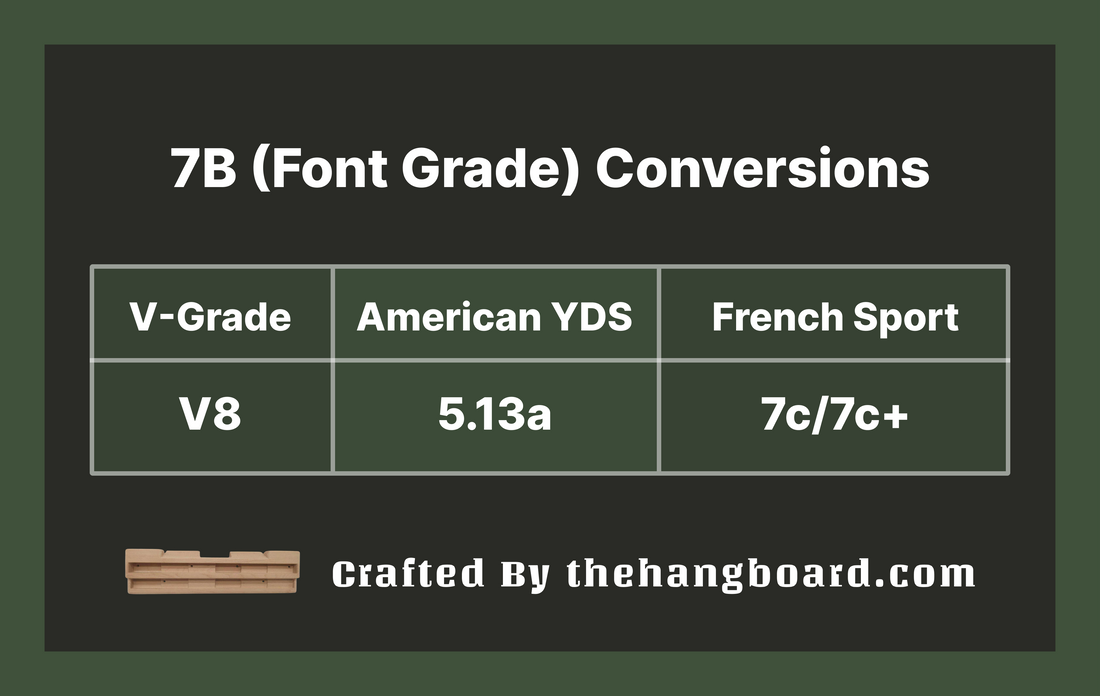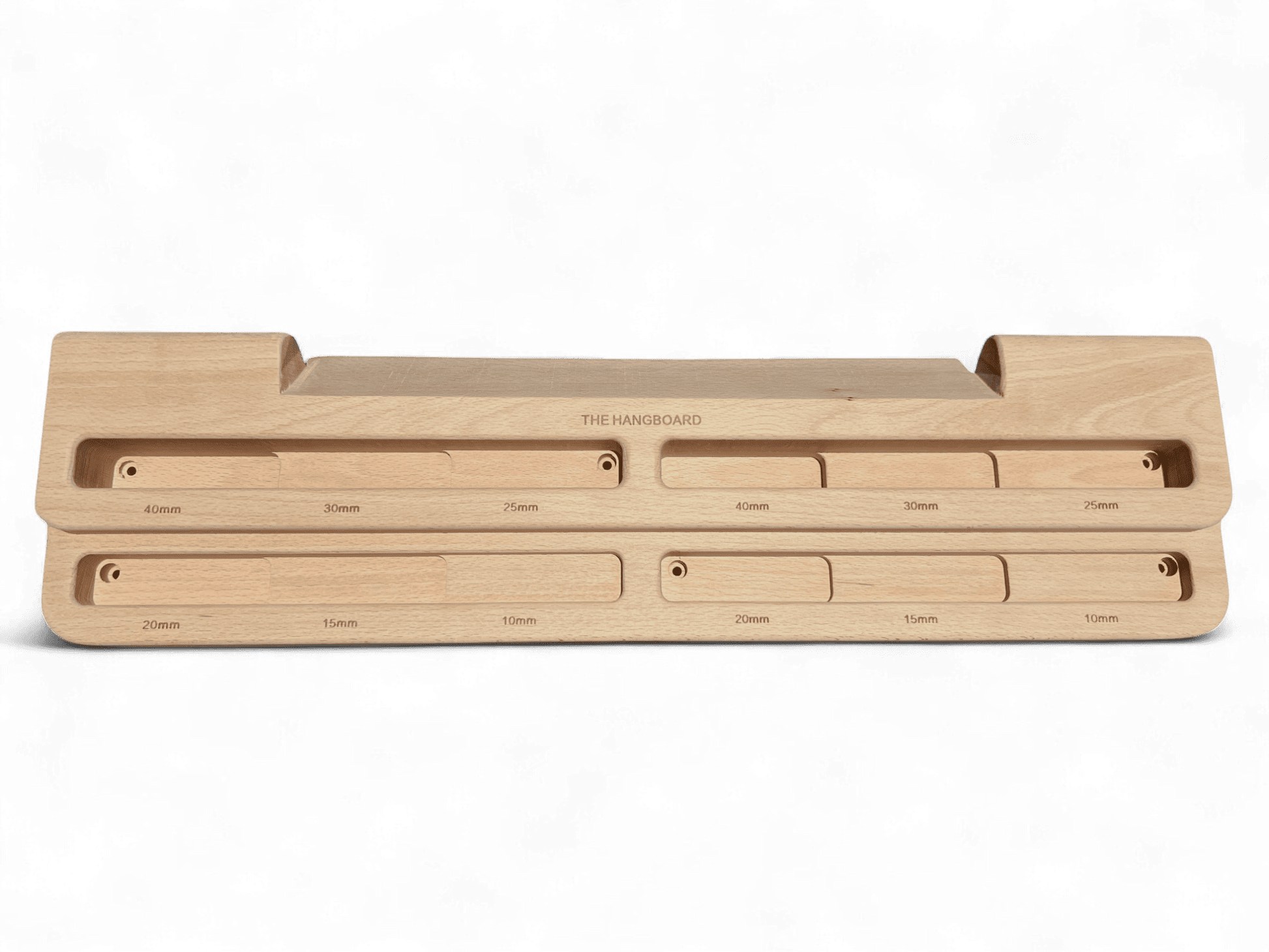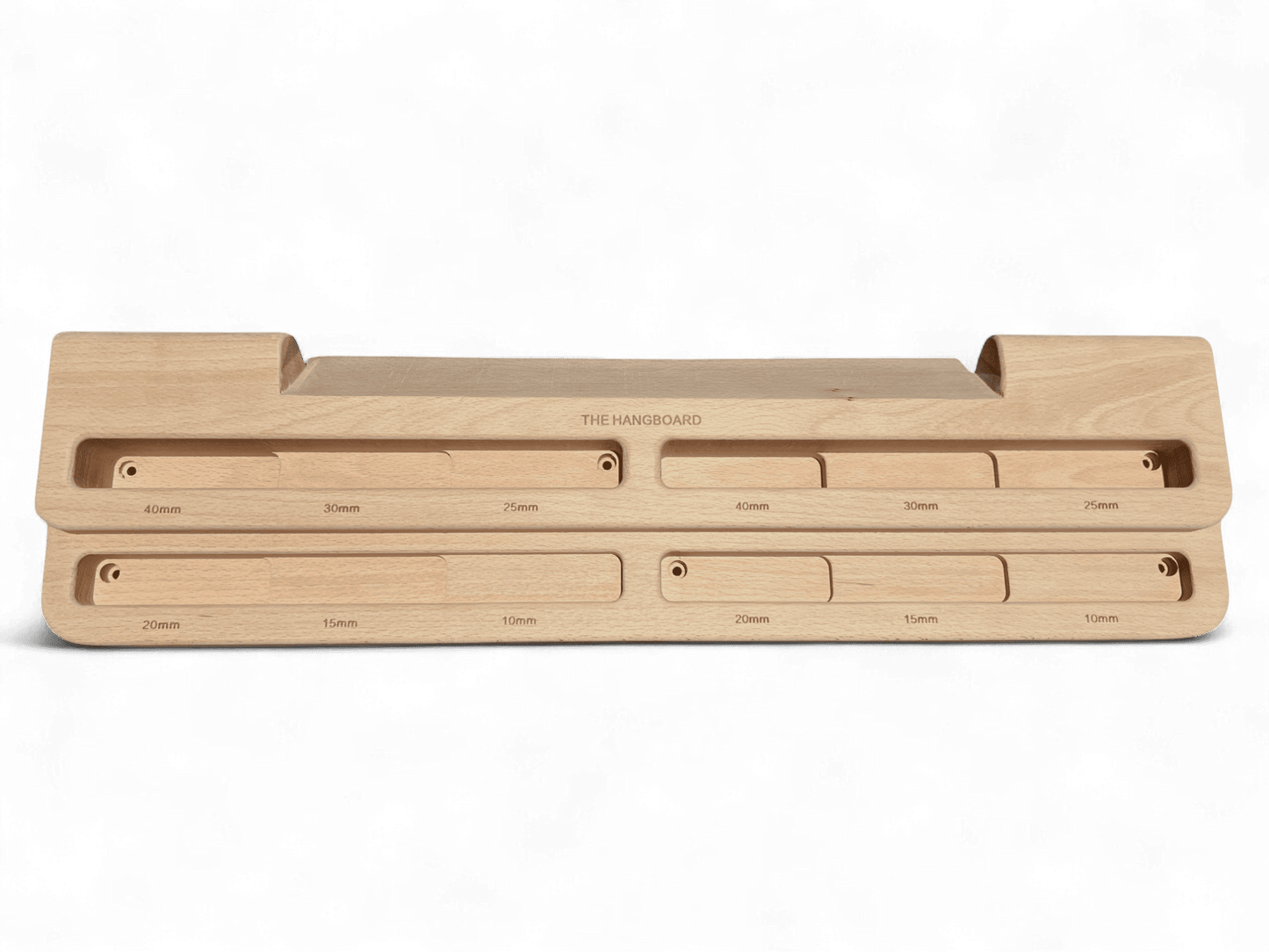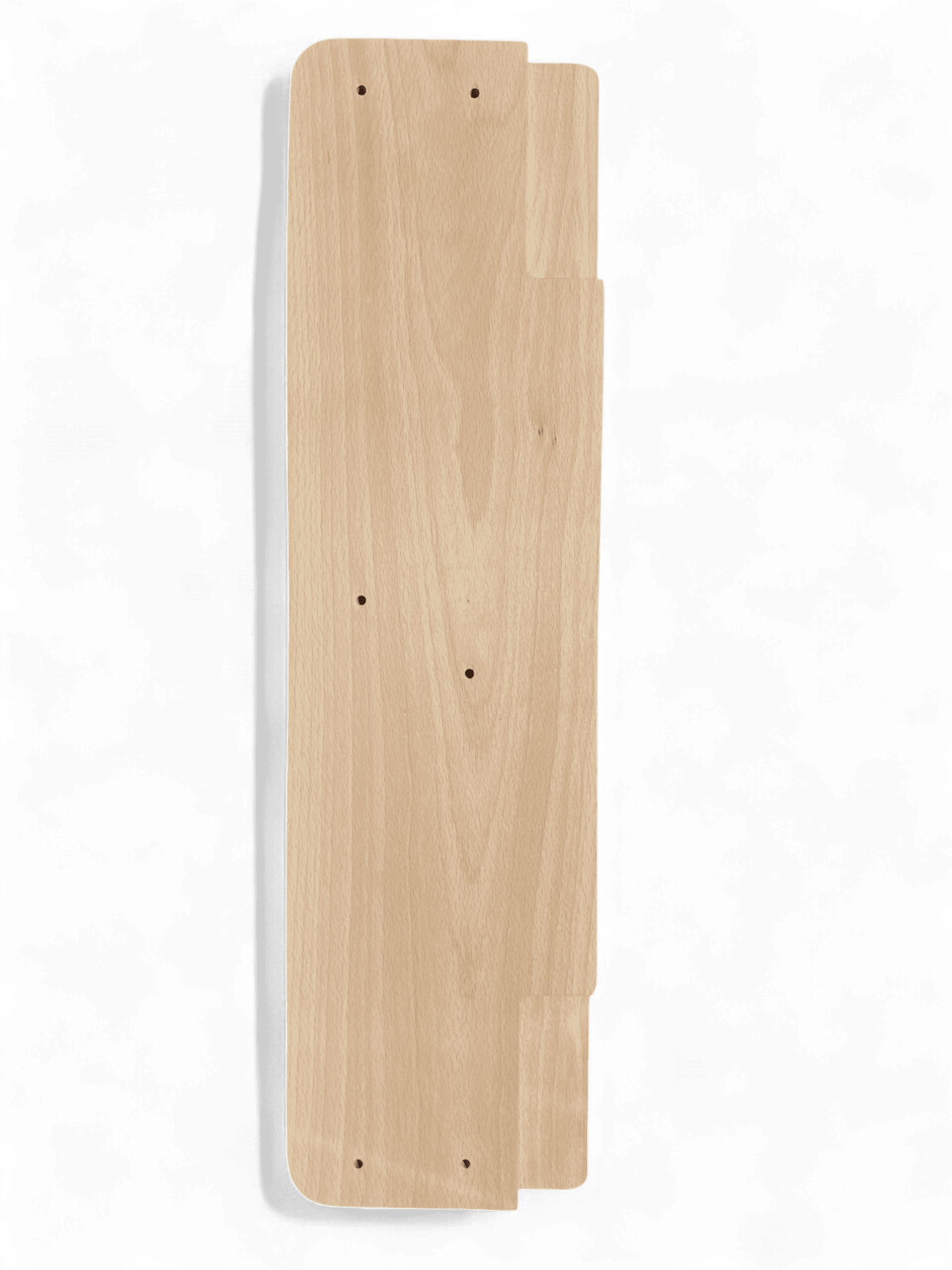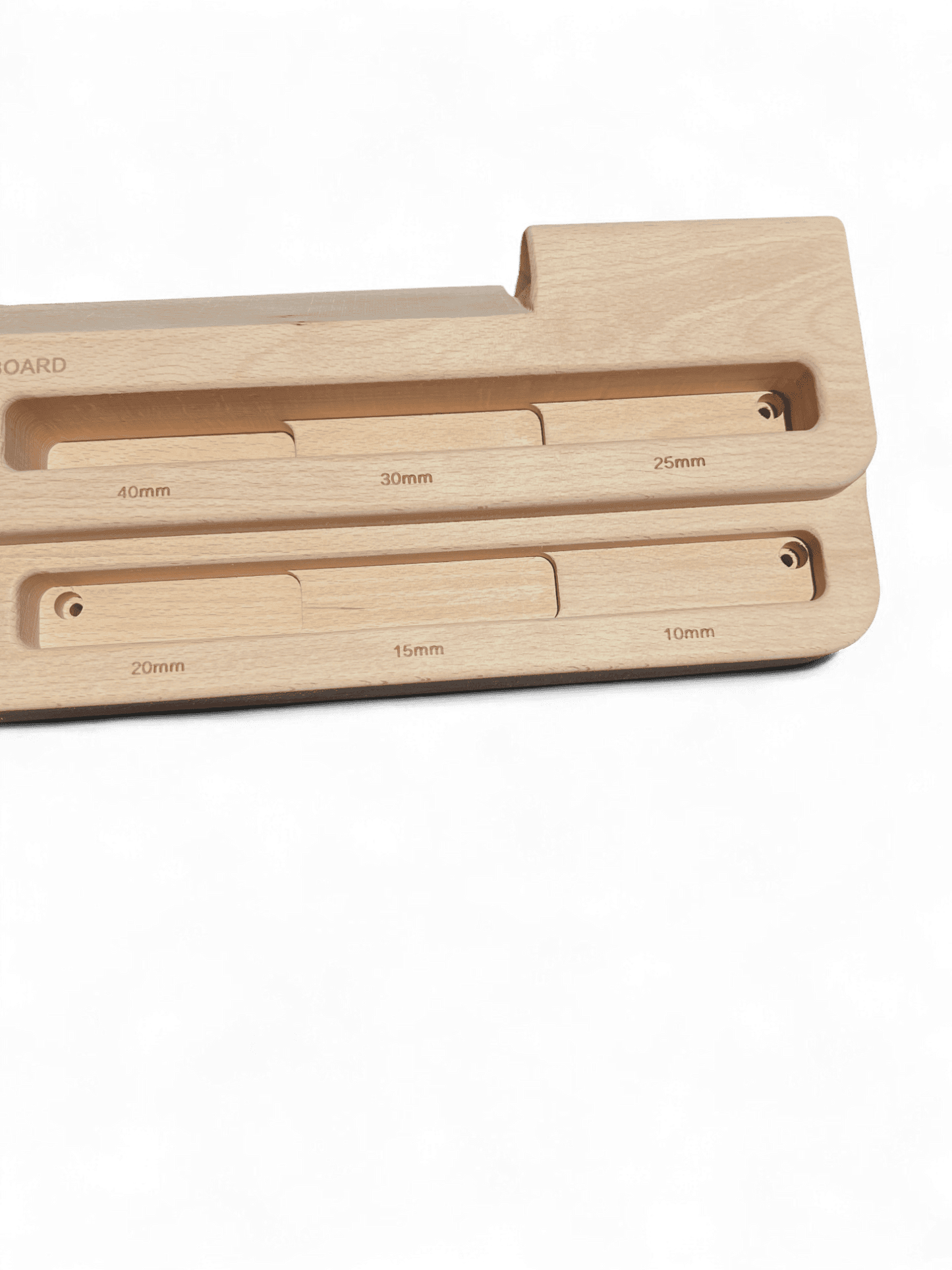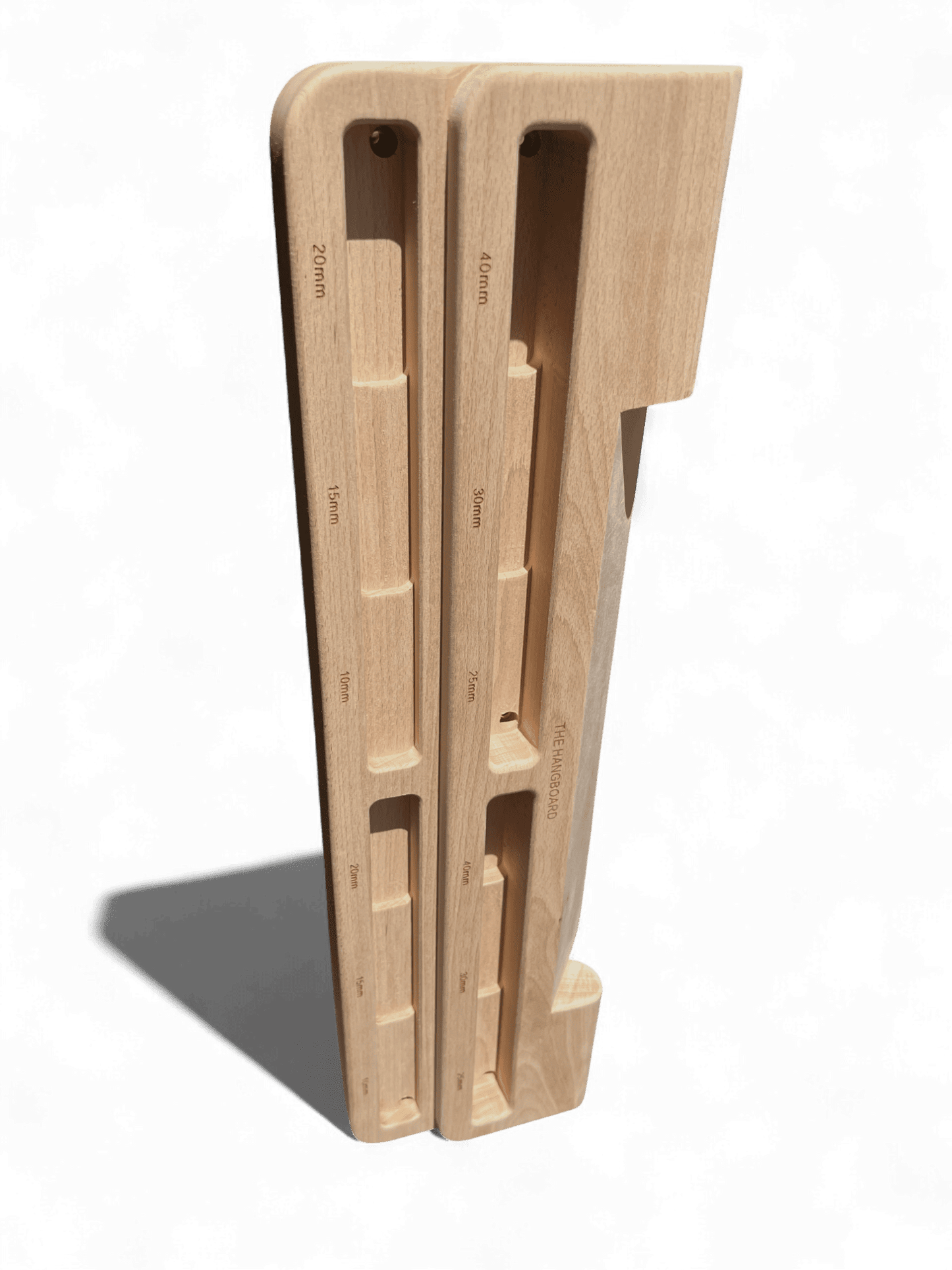7b Boulder to V Scale:
For those specifically searching for the "7b to V scale" conversion, here it is: 7b in the Fontainebleau (Font) grading system is approximately equivalent to V8 in the V scale.
Comparison Table:
| Fontainebleau Grade (Font) | Approximate V Scale |
|---|---|
| 7a+ | V7 |
| 7b | V8 |
| 7b+ | V8 / V9 |
| (Note: As always, grading remains somewhat subjective and may vary due to multiple factors.) |
🚀 Looking to Conquer Higher Grades in Climbing?
Ready to level up? The Hangboard is your ultimate tool for success. With incremental hold depths for precision training, and features designed for climbers aspiring to advance, this is more than just equipment—it's your next step to mastery.
Elevate your training with THE HANGBOARD — and watch those grades climb!
In-Depth Look:
The 7b grade in the Font system signifies a tier of climbing that challenges even experienced climbers, merging complexity with sheer strength demands. Climbers tackling boulders of this grade will frequently face sequences that ask for a blend of power, precision, adaptability, and mental stamina. In the North American context, this grade aligns with a V8.
Both 7b of the Font system and V8 of the V scale are widely respected as upper-level benchmarks in the climbing community. Tackling problems of this caliber requires climbers to have a deep reservoir of skills, strength, and determination.
Historical Overview:
The Fontainebleau grading system has its origins in the historic bouldering hub of Fontainebleau, France, capturing the essence and development of European bouldering culture. On the other side, the V scale narrates the adventurous spirit and innovation of North American bouldering. Whether it's a 7b in Font or a V8 in the V scale, each grade tells a story, reflecting challenges overcome, techniques mastered, and moments of pure elation.
Wrapping Up:
The grades 7b in Font and V8 in the V scale serve as more than mere numerical representations. They are milestones on the climbing journey, reflecting progress, challenges, and accomplishments. Comprehending the nuances between these grading systems allows climbers to gain deeper insights into their growth trajectory and the rich tapestry of the global bouldering scene.

